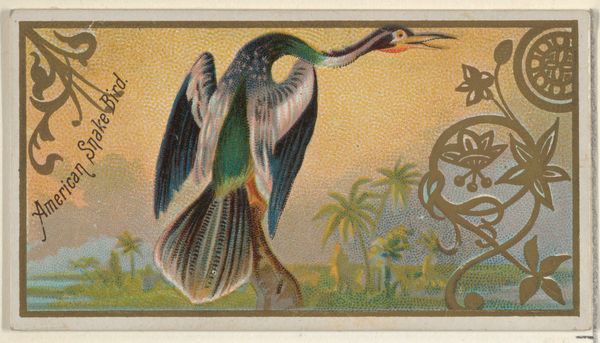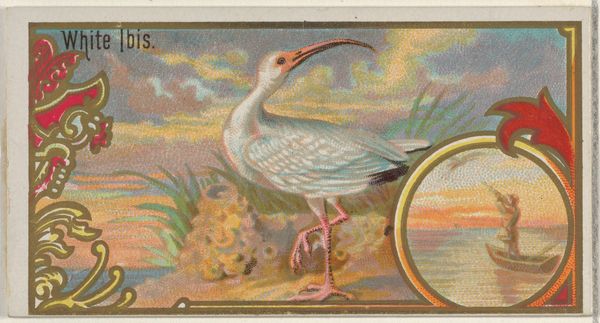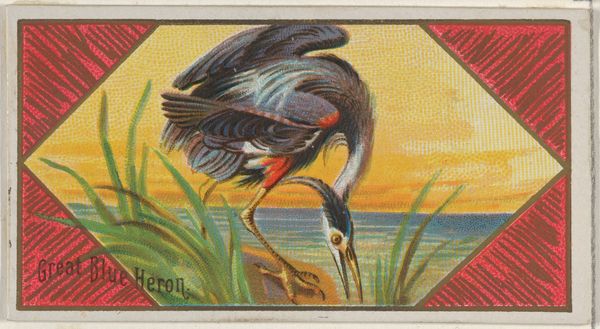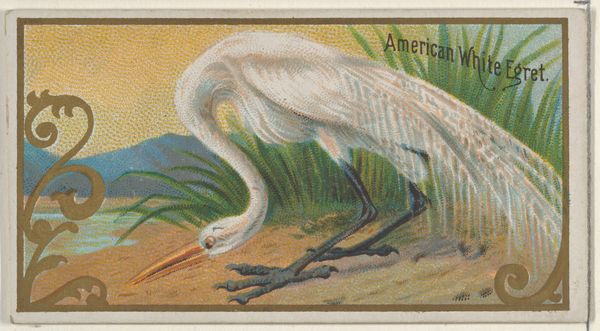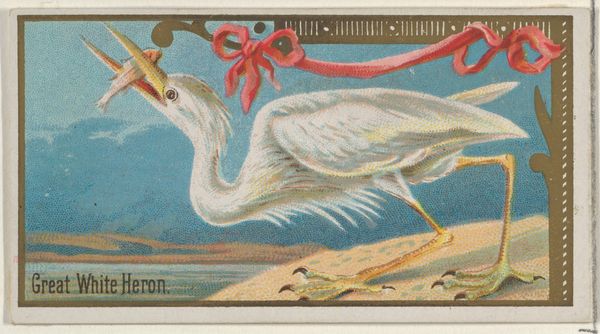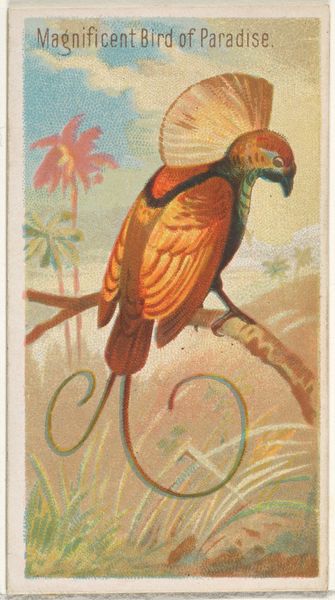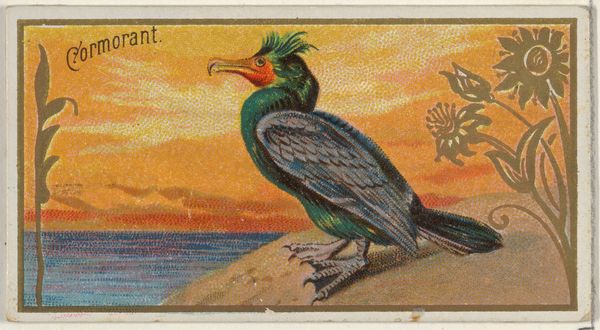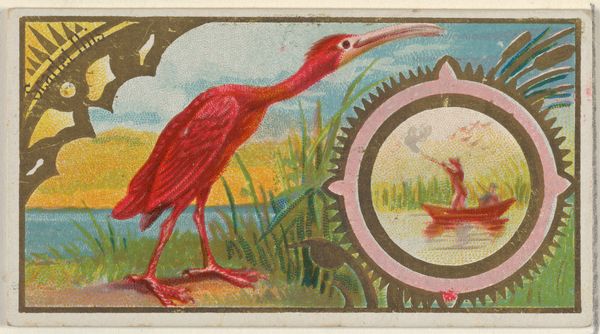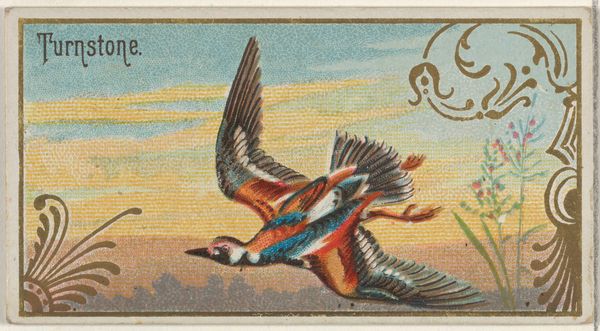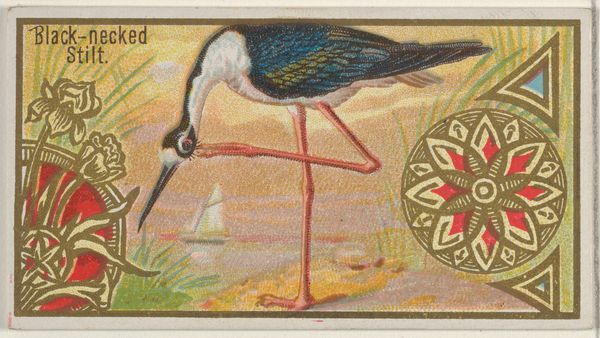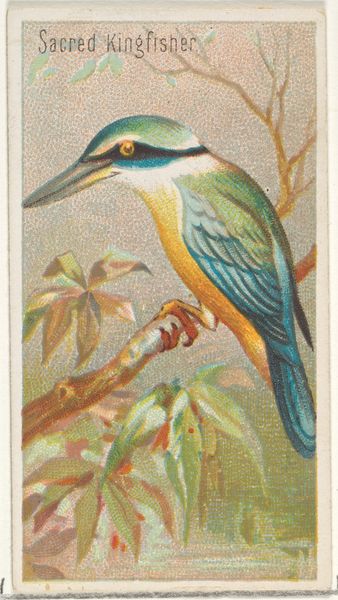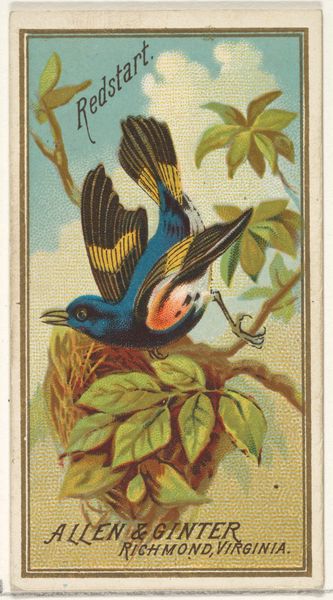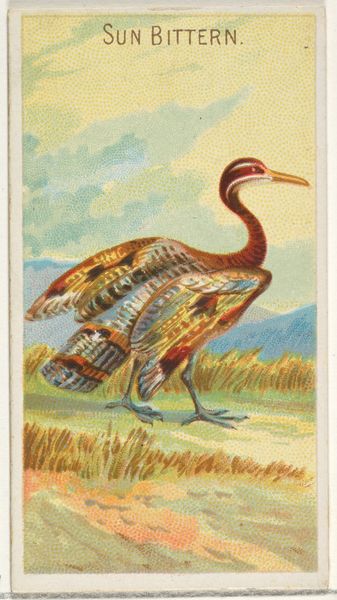
Louisiana Heron, from the Game Birds series (N13) for Allen & Ginter Cigarettes Brands 1889
0:00
0:00
# print
#
landscape
#
figuration
Dimensions: Sheet: 1 1/2 x 2 3/4 in. (3.8 x 7 cm)
Copyright: Public Domain
Editor: Here we have "Louisiana Heron," from the Game Birds series, created around 1889 for Allen & Ginter Cigarettes. It's a watercolor drawing and print. It's quite a small picture, but the detail is amazing, like a little jewel! How would you describe what's going on in this image? Curator: Well, this tiny image speaks volumes about materiality and labor in the late 19th century. These cards, distributed with cigarette packs, blurred the lines between art, advertising, and mass consumption. Consider the process – watercolor drawing meticulously reproduced as a print. The very act of consumption – smoking – is directly tied to the production and distribution of these images. Editor: So, you are saying this artwork becomes part of a capitalist exchange, even if it wasn't originally conceived as "high art"? Curator: Exactly! And the choice of subject, the Louisiana Heron, is crucial. The demand for heron plumes for fashionable hats was decimating the bird population. This card, intended as a collectible, ironically documents an ecological disaster fueled by consumerism. Does that dynamic change how you see the image? Editor: It does! It's more than just a pretty picture of a bird. It points to the material conditions and social practices that impact our environment. It feels like this image itself becomes a commodity within the context of the fashion industry’s harmful pursuit of exotic feathers. Curator: Precisely. And think about the labor involved: from the artists and printmakers to the factory workers packing cigarettes, this card is a product of extensive and often invisible labor. Editor: I hadn't considered the human effort embedded within this tiny piece. I'm walking away seeing not just an image, but a whole network of material and social relationships. Curator: Indeed. By analyzing the materials, production process, and historical context, we gain a far richer understanding of this seemingly simple cigarette card.
Comments
No comments
Be the first to comment and join the conversation on the ultimate creative platform.
